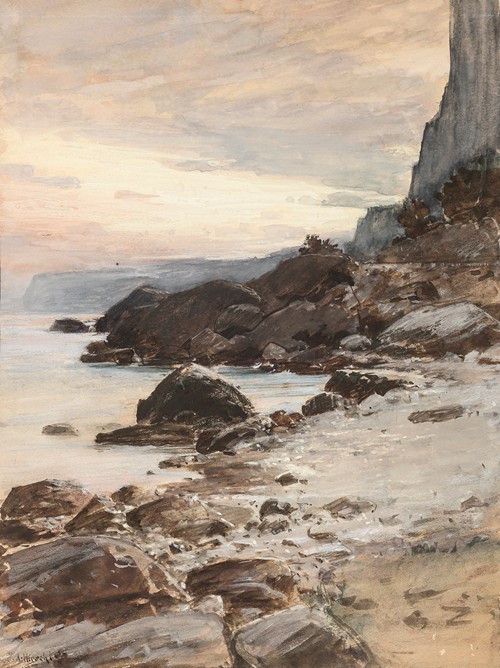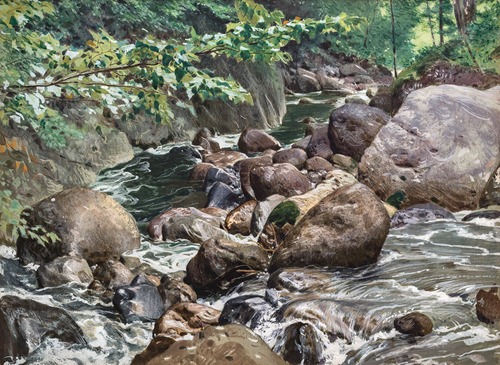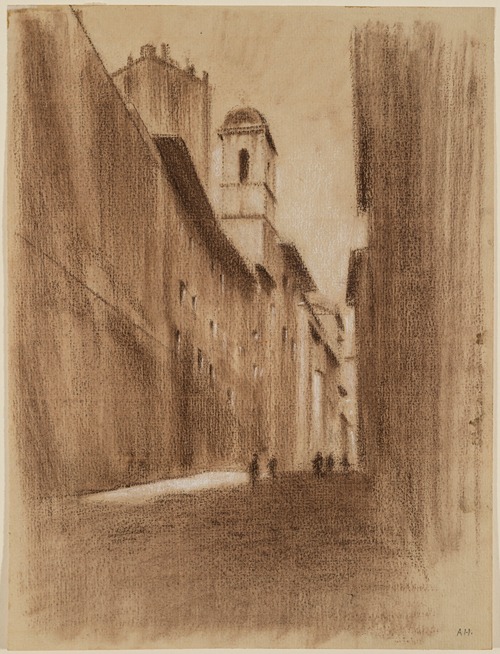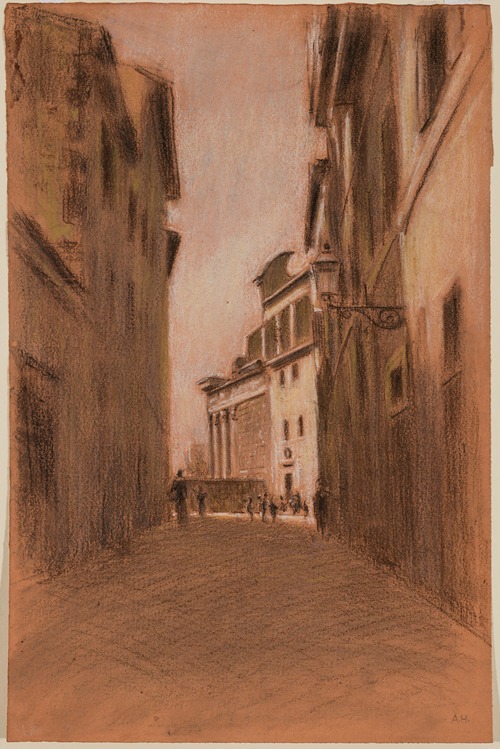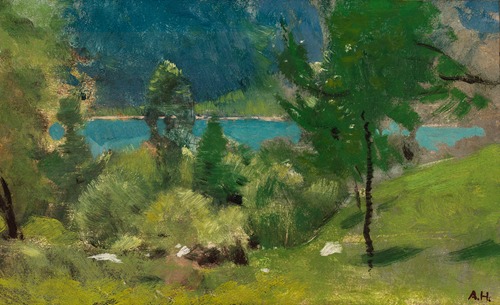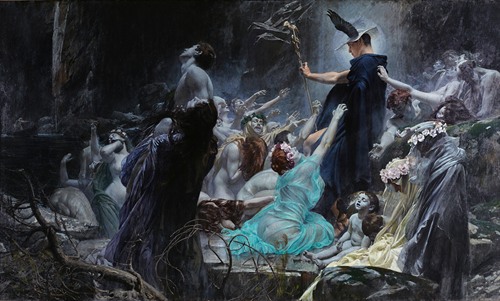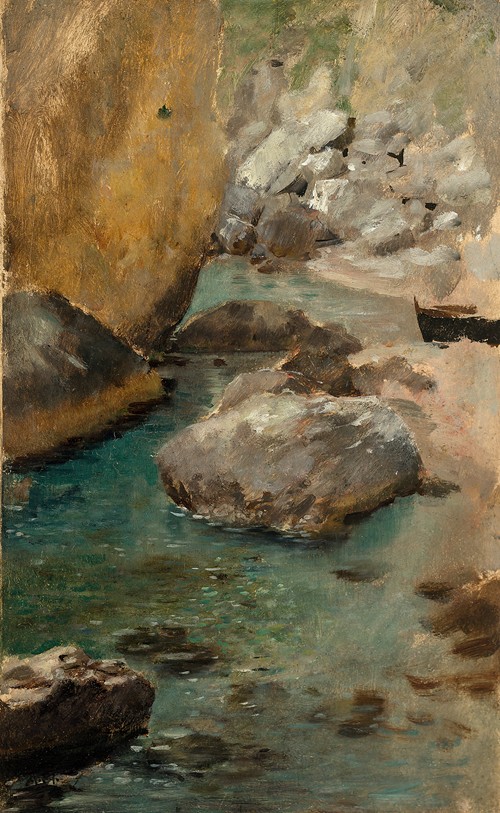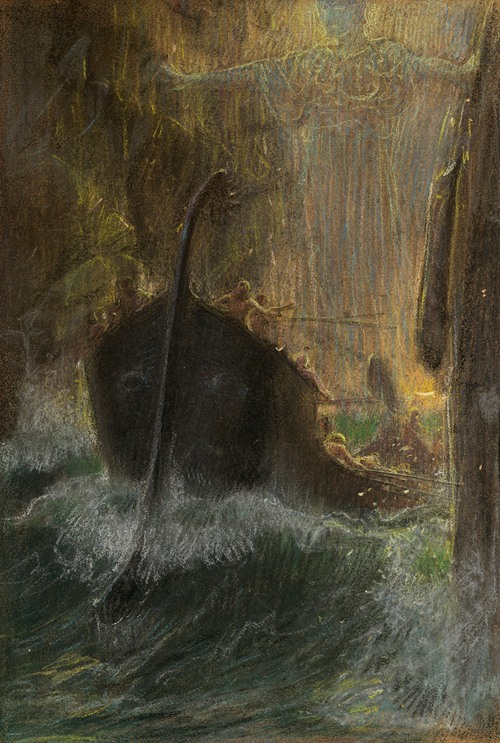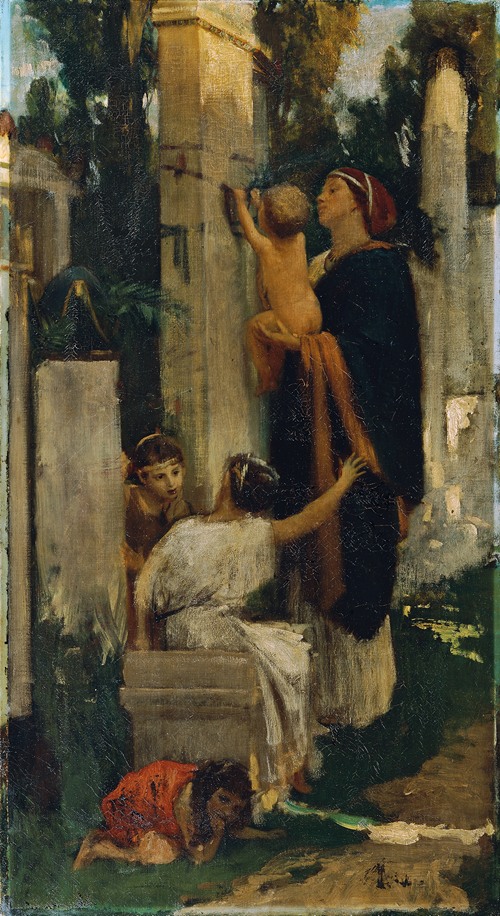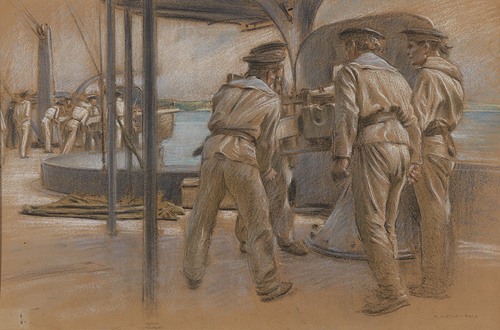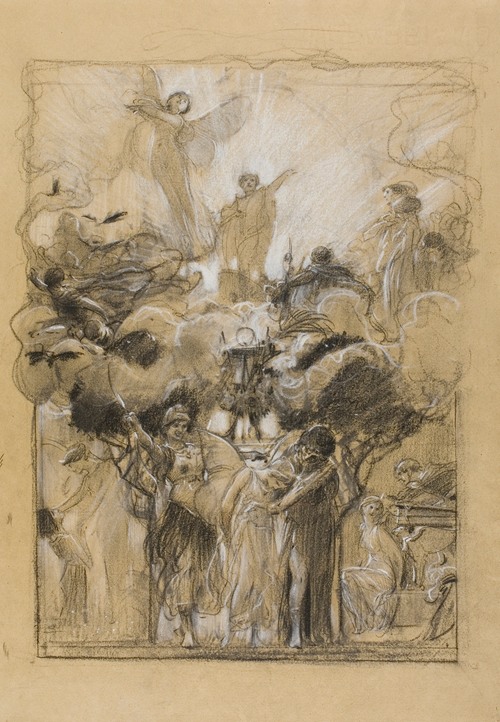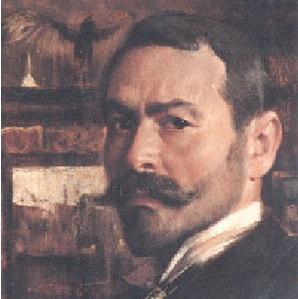

Adolf Hirémy-Hirschl
Adolf Hirémy-Hirschl was a Hungarian, Jewish artist known for historical and mythological painting, particularly of subjects pertaining to ancient Rome. Some of his major history paintings have been lost, and many of his smaller works were retained by his heirs until the early 1980s. Although he was one of the most successful artists of fin-de-siècle Vienna, these circumstances, along with the rise of Gustav Klimt and the Vienna Secessionists, put his reputation in eclipse.
Hirémy-Hirschl was born 31 January 1860 in Temesvár, then a part of Hungary, but at an early age he went to Vienna to study. He received a scholarship to attend the Akademie der bildenden Künste in 1878. He won his first prize two years later with Farewell: Scene from Hannibal Crossing the Alps, followed in 1882 by a prize that allowed him to travel to Rome.
His time in Rome was a major influence on his choice of subject matter. After returning to Vienna, he produced the acclaimed large-scale canvas The Plague in Rome (1884), a work that is now lost. He enjoyed a successful career with numerous commissions and high praise for his historical and allegorical works, culminating in the Imperial Prize in 1891. During the rise of Klimt and the Vienna Secession movement, he began using the name Adolf Hirémy and moved to Rome, where he spent the last 35 years of his life as an eminent member of the expatriate art community. In 1904, seventy of his works were exhibited at a retrospective. He was admitted to the Accademia di San Luca in 1911.
One of his last works was Sic Transit … (1912), an immense allegorical polyptych on the fall of the Roman Empire and the rise of Christianity. His heirs retained possession of his studio for decades following his death. A large number of his drawings, watercolors, pastels, and oil sketches became public only in the early 1980s.
He died in Rome on the 7th of April in 1933 and was buried in the Protestant Cemetery, Rome. Gravestone: S647 TOMB NUMBER - 393, Zone 1, Row 15, Plot 54.
